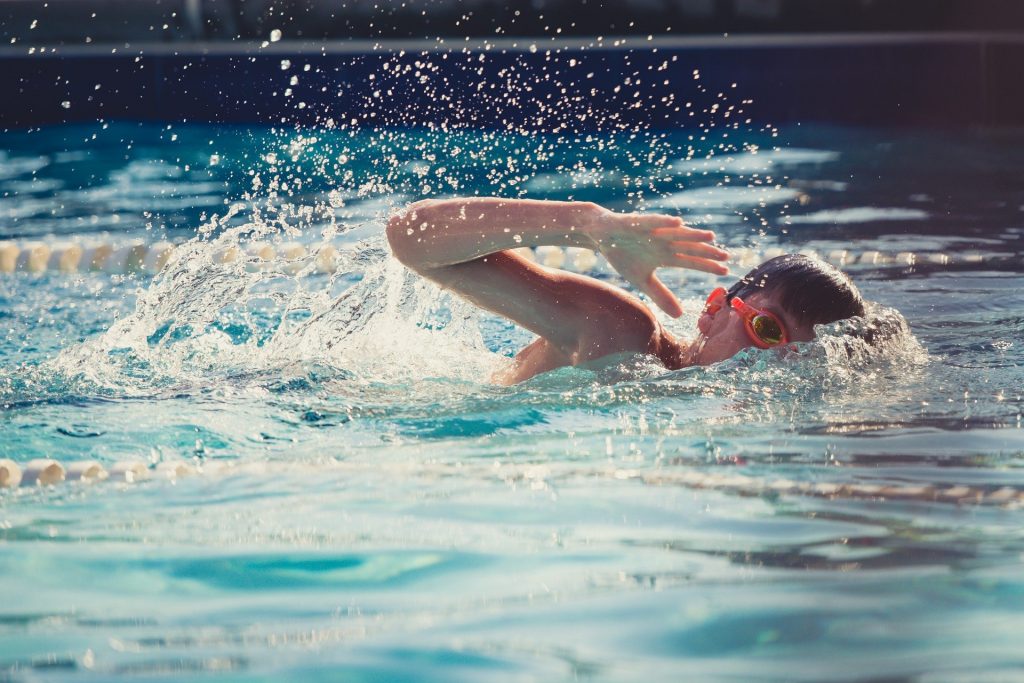It’s not always easy to reconcile sports and family life, especially when you have children. Have you ever thought about playing sports with your children? Many activities can be practised at any age: find ideas for sessions to try out with your family.
5 good reasons to do sports with your children

Playing sports with your children is a great way to reach your goals and share your passion through fun family moments:
- Between work and family life, it is sometimes difficult to find time to exercise: by involving children in your sport, you can stay active and spend time with them.
- By explaining to them how to do the right moves and warm up well, you refine your technique and progress faster.
- Playing sports is a good way to transmit positive values such as respect for the opponent, perseverance, sense of achievement and self improvement
- Playing sports together is motivating: share your energy together and rediscover the sensations of your first sports discoveries.
- By spending time with your child outside of the daily routine, you will build new bonds in another context and increase your bond.
How do you set up a sports routine with your children?

To anchor your sports routine with your children over the long term, here are a few tips:
- Think about your possibilities: some gyms offer group classes for families.
- Start a challenge as a family, by staying on the lookout for local initiatives: hiking, running or biking… It will be an opportunity to train with your children over a long period of time with a motivating project in common.
- Vary the activities to maintain motivation: stay focused on discovery, even if you have chosen a main activity as a year-round theme.
- Set up a family sports plan in consultation with your children.
What sports to practice with children?

Many sports activities are suitable for family practice:
- Outdoor sports: hiking, running, cycling, ball games, athletics, team sports…
- Indoor sports: climbing, swimming, cross training…
- How about at home? Circuit training with muscle strengthening exercises, home fitness, yoga, dance, gym…
A fitness session to do with your child
This fitness session can be done indoors or at home, outdoors or indoors and without equipment:
- Plan ahead for hydration and stress the importance of a warm-up. For 10 minutes, mobilize all joints. Run a few strides on the spot to increase your heart rate and prepare for the workout. Don’t hesitate to explain what you are doing, adapting your approach according to your child’s age.
- Choose 3 to 5 exercises involving different muscle groups and make up a circuit of 8 to 15 minutes depending on the age and level of the participants. Each exercise will be performed for 2 minutes and followed by 1 minute of active recovery: brisk walking or short strides on the spot.
- Squats, front lunges, crunches, burpees, jumping jacks, mountain climber… don’t hesitate to vary or even randomly choose exercises at each session: this guarantees success with the youngsters!
- At the end of practice, drink and stretch. It’s also time to debrief the family session and challenge yourself for the next time!
The first yoga session with your child
Soothing and concentration-enhancing, yoga can be practised even by very young children. A 10-minute session is ideal to get started. Here is an example of a yoga session to do at home with children :
- Do some stretching at the beginning of the session. Do the movements at the same time as your children, describing your movements in a soothing voice. Standing up, explain that your feet represent roots firmly anchored to the ground and ask them to imagine that they are growing like a plant, stretching and lifting themselves up on tiptoes. Then, with your feet flat, swing gently like a tree in the wind.
- The candle, Sarvangasana: lie on your back, hands at your sides. Raise your legs straight (feet relaxed) while breathing, then the trunk, until your body is vertical, resting on the nape of the neck, shoulders and arms.
- The cat, Marjarâsana: position yourself on all fours, knees on the ground spread out at the width of the hips and wrists at the width of the shoulders. Relax the belly by breathing in and around the back by breathing out, imagining that the navel is closer to the spine.
- The downward dog, Adho Mukha Svanasana: get down on all fours, without putting your knees on the ground. By pressing on the tiptoes, move the pelvis upwards to form a pyramid with the buttocks as the top.
- The boat, Navâsana: sitting on the ground, lean back and raise your feet keeping your legs straight, stretching your arms forward to keep your balance.
Check out our Health & Fitness page for more advice.
